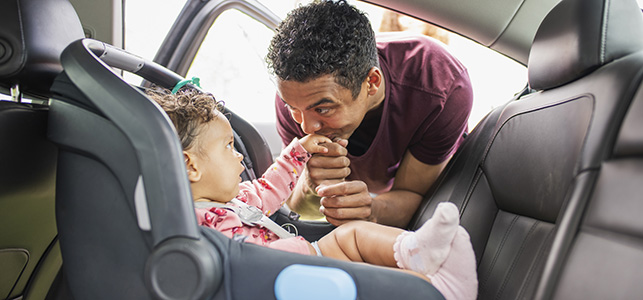A quick guide to car seat safety
Correctly used child safety seats in vehicles can reduce the risk of death by as much as 71 percent. That’s a shocking statistic. What makes it alarming is the fact that more than half of all car seats aren’t used or installed correctly.
National Child Passenger Safety Week is the third week in September, a great time to brush up on how to keep kids safe while riding in the car.
Our Safe Kids Virginia team offers insight into making sure your child is in the right car seat, the right way
- Virginia law requires little ones to remain rear facing until the age of 2. After age 2, and when a child outgrows a rear-facing car seat by weight or length, they can be moved to a forward-facing car seat with a harness. It’s essential to use the top tether. When they’ve outgrown this forward-facing seat, they’re ready for a booster seat. The booster will lift them up and allow the car’s adult lap and shoulder seat belt to fit over them correctly. Kids are safest in the seat designed for their specific weight, height and age, so don’t be in a hurry to move them up to the next seat.
- There are many different car seat models and brands to choose from, which can be overwhelming. It’s important to note, inexpensive seats must meet the same U.S. federal safety standards as more expensive ones, but may not have all the comfort features, such as padding on the harness straps. If you prefer more features, be sure to buy a car seat that has them provided. Adding things later (called aftermarket products) can make your child less safe.
- Never buy a used car seat if you don’t know the previous owner and complete history of the seat. A used car seat is unsafe if it’s been in a crash or is missing parts, labels or instructions. It’s also unsafe if the manufacturer has issued a safety recall that hasn’t been fixed.
- Make sure the car seat is installed correctly (according to directions in the manual) and that the straps fit properly and snugly. This will provide optimal safety in the event of a crash. Safe Kids Worldwide and the National Highway Traffic Safety Administration offer great online tools and tips to help you ensure the right fit and installation for your child.
- There’s been a recent rise in sales of counterfeit and non-compliant car seats, which don’t meet standards to be considered safe. Look for a permanent sticker that states the seat meets Federal Motor Vehicle Safety Standard (FMVSS) 213. It should also come with a manufacturer’s label, registration card, minimum and maximum height/weight limits, and a printed manual. Keep an eye out for these, as well as any red flags that may signal an unsafe seat.
